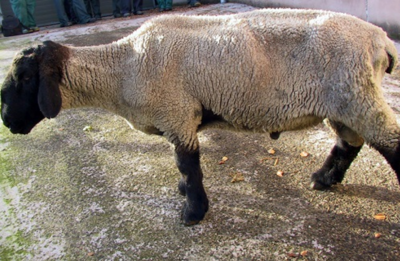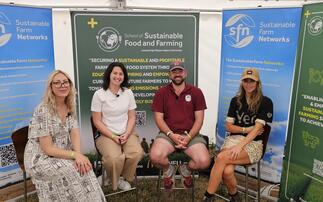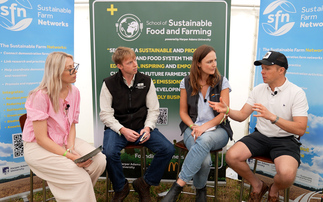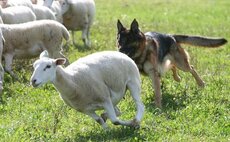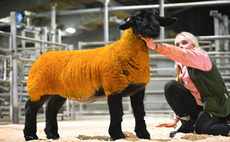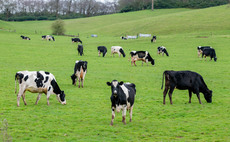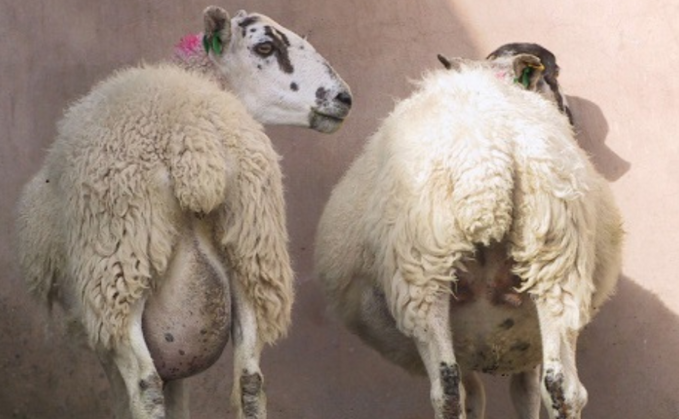
A study in the UK last year showed that 64% of sheep flocks tested, were positive for Johnes(*1). Johnes Disease in sheep is a common chronic wasting disease caused by the bacterium Mycobacterium avium subspecies paratuberculosis (MAP).
Johnes in sheep can affect any breed and is mainly spread through MAP in the faeces, but it can also be spread across the placenta, via milk to lambs, through grazing the same pasture as infected cattle or where slurry from infected cattle is spread and through the purchase of infected sheep which may not be showing any clinical signs.�� MAP bacteria are very resilient and are viable in the environment for up to��18 months.
Sheep are susceptible to both the cattle and sheep strains of bacteria.�� The sheep strain can be difficult to diagnose as clinical signs are often non-specific and include sheep becoming thin and dropping to a body condition score of 1.5 or less, despite being well fed and having full mouths; they will often be bright and alert with a lack of response to flukicides or wormers which can lead to misdiagnosis and typically mortality can be from 5-6 years of age.�� If sheep are infected with the cattle strain this can be more virulent, leading to rapid weight loss, scouring and death from as early as 2 years of age onwards.
Infection generally occurs in younger animals less than 6 months old but clinical disease may not show for several years. Johnes is also a true iceberg disease in that for every animal showing clinical disease, there are typically 10 15 that have sub-clinical disease, showing no signs but which can have an ongoing impact on levels of infection.
The disease has a significant effect on the profitability of flocks due to(*2):
- Shorter productive life sheep can die prematurely from 2 years of age
- Higher replacement costs
- Reduced lambing, rearing and finishing %
- Reduced cull ewe value
- Increased feed and medicine costs
- Loss of valuable bloodlines
Accurate diagnosis can be difficult and best achieved by post mortem examination of any thin ewes, dying early. Otherwise the most cost effective and relatively reliable results can be achieved by speaking to your vets and submitting pooled faecal samples from 10, thin, poor performing ewes and getting these tested.
Once a flock is infected with Johnes eradication is almost impossible, so the aim is to control the disease by reducing the build-up of bacteria on the pasture therefore transmission. Although there is no licensed vaccine for Johnes in cattle, there is a licensed vaccine for Johnes in sheep.��
The vaccine, Gudair®, is a one shot lifetime vaccine and whilst vaccination wont eliminate the bacteria nor remove all an infected flocks problems overnight, it has been shown to be a very effective way of controlling Johnes and significantly reducing the impact of the disease in infected flocks(*3).��
The most cost effective way to minimise the risk of Johnes, is to vaccinate all replacement animals between 4 weeks and 6 months of age. So as youre selecting replacements this year consider the risks of Johnes and talk to your vet about vaccination.
References
- AHDB (2019) Iceberg diseases of ewes - Technical manual for vets, consultants and farmers
- Davies (2018) Iceberg infectious disease of sheep. SHAWG conference, Tamworth
- Reddacliff L, Eppleston J, Windsor P, Whittington R, Jones S (2006) Efficacy of a killed vaccine for the control of paratuberculosis in Australian sheep flocks. Vet Microbiol. 115(1-3):77-90.��
GUDAIR emulsion for injection for sheep and goats [POM-V]. For advice on the use of this or alternative medicines speak to your veterinary surgeon. Further information is available on the SPC or from from: Virbac Ltd. Woolpit Business Park, Windmill Avenue, Woolpit, Bury St. Edmunds, Suffolk IP30 9UP. Tel: +44 (0) 1359 243243 UK: Email [email protected]:
Use medicines responsibly .
